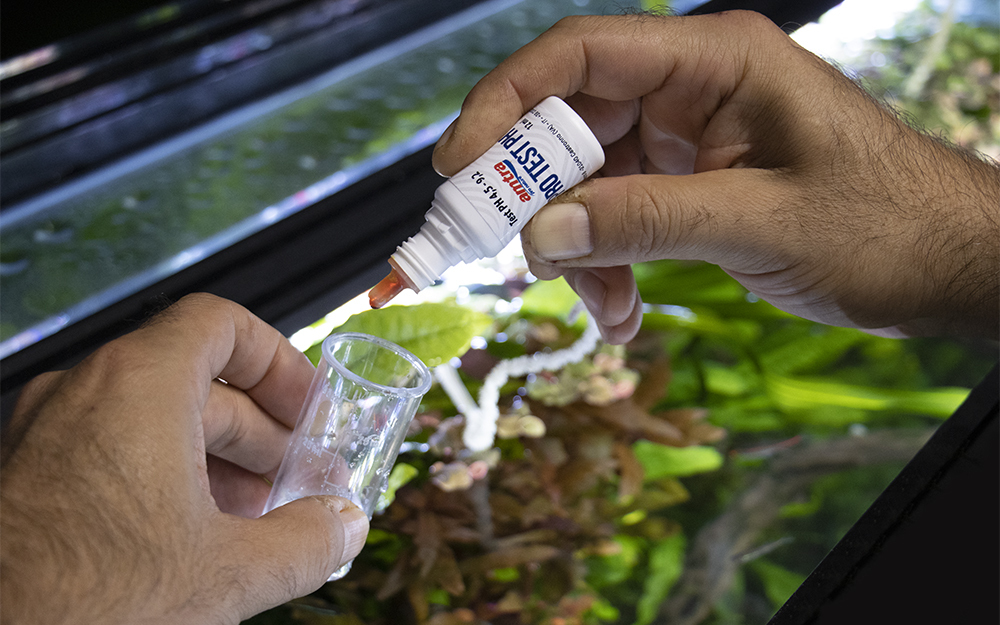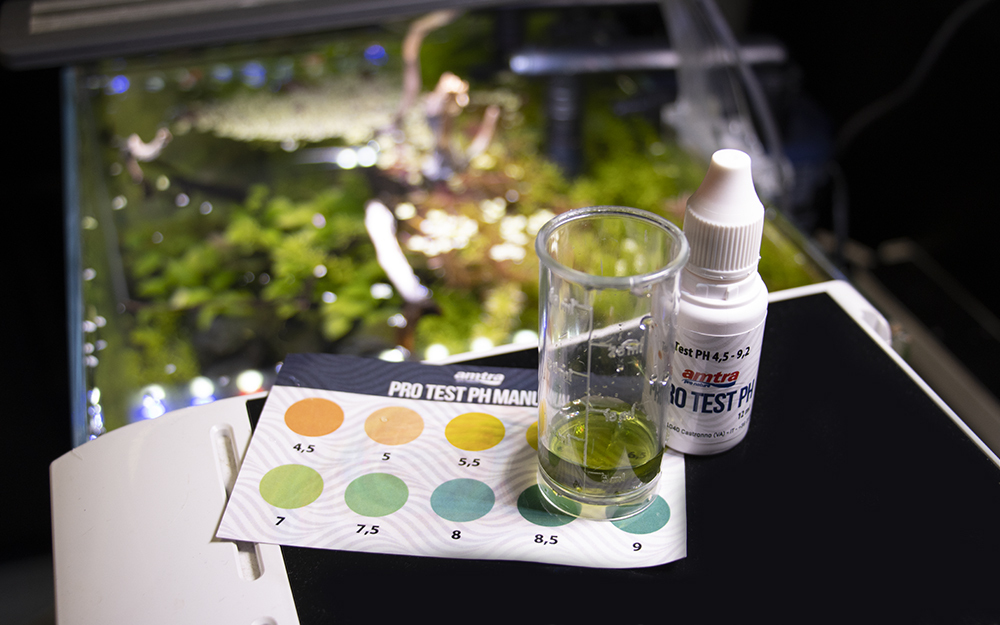The most important factor to consider in order to have a healthy aquarium is the maintenance of a good quality of its water. As a matter of fact, the health of our fishes and the growth of our plants are strictly related to the balancing of the water chemicals values and to the presence of nitric substances coming from the decomposition and the digestive processes of the organic elements that are into the aquarium.
As we have already read (here) in the article that talked about the water of the aquarium, water contains a great amount of mineral organic substances which have to be constantly monitored.
We are going to take a look to the main water parameters and to understand the reasons why it is important to monitor them for fresh water tanks.
What are the values of water?
PH is the measure of the acidity or alkalinity of the liquid
The value scale of the pH goes from 0 to 14, while 7 represents the neutral value of the pH. The values that are lower 7 indicates the presence of substances that are able to acidify the solution, while those values that are above 7 mean the presence of alkalinizing substances.
In the aquarium what does it imply? It is important that the pH remains stable within those ranges that allow fishes to live, according to the pH values that occur in their places of origin. Sudden ups and downs of the water pH could compromise the organs functioning, putting into risk the health of fishes, other than killing filter bacteria or favoring unwilling chemical reactions. For instance, if the water pH goes from acid values (that means lower 7) to alkaline values (above 7), the harmless ammonium, which comes from the physiological process of aquaria organisms, transforms itself rapidly into ammonia, a toxic element even in small quantities.
In order to acidify the water of the aquarium, we can use humic acid such as the liquids contained into Amtra Eichen Extrakt or as those naturally released by leaves (Amtra Catappa Leaves) and barks (Amtra Catappa Tubes) of tropical plants such as the Catappa tree. Another way to acidify the water consists in the releasing of low doses of carbon dioxide (CO2) into the tank, through a system such as Amtra CO2 System. This gas, coming in contact with water, reacts forming carbonic acid (H2CO3), a weak acid able to slightly decrease the pH.
Into the tap water there may be an amount of dissolved alkaline salts, mainly carbonates, that tend to maintain a high level of pH. These have the ability to neutralize the acid substances that may be formed in the aquarium. According to their concentration, they are able to keep the pH stable at alkaline values. One of the parameters of their concentration is the KH, the carbonate hardness.

KH is the ability of water to keep the pH stable
This parameter measures the presence of dissolved carbonates in the water and the alkalinity, that is the capacity of the water to keep the pH stable. Conventionally, we measure this parameter through German degrees (°dH or °dKH, 1° dH stands for a quantity of salts equal to 10 mg/l of calcium oxide).
In low KH conditions (from 0 to 3 / 4 degrees) the water pH tends to easily vary, while in high KH conditions (above 7 or 8 degrees) the pH becomes stable at alkaline values. When KH values are low (from 1 to 5 / 6), water is soft. On the contrary, when KH values are higher, water gets hard.
In the aquarium the KH parameters tend to get lower due to metabolic processes carried out by plants and bacteria, which can use those substances as carbonic sources. For this reason, it is important to change the water regularly and to reintegrate lost carbonates through specific products such as Amtra KH +. However, dissolved in the solution there are not only carbonate salts, but also many salts of other elements that are counted in the values of the total hardness of water (GH).
GH is the measure of all mineral salts dissolved in water
It is the total hardness, or the measure of all the mineral salts dissolved in water, mainly Calcium and Magnesium. Generally, in a balanced aquarium GH is approximately two times the value of KH. Higher values may show the presence of decorations or materials that release salts in the aquarium. This means that these values has to be managed through frequent water changes to avoid major imbalances. If the GH parameter is too low, it can be raised using a specific supplement such as Amtra GH+.
Electric conductivity of a solution
Cunductivity is usually measured in microSiemens and it represents a value that indicate the thermal conductivity of a solution. The results of a water that lacks of solutes (such as the one obtained by a good osmosis system) will be 0.
There are some factors that contribute to the capacity of water to conduct electricity: the presence of solutes as salts minerals, the nitric compounds as ammonium (coming from the metabolic activities of organisms), the nitrites and nitrates or the decomposition of the remains of feeds and residuals of plants. This data is very useful to understand the quality of water in dark water tanks, since the colors of the reagent test may be influenced by the tannins that are into the water. It also helps to realize the usury state of the membranes of the osmosis water system.
To measure it we can use digital tools such as Amtra Digital Conductivity & TDS Tester ATC.
- NO2: in the aquarium the nitrites are the most harming nitric compound for fish. They come from the decomposition of proteins and its presence indicates a not correct cycling of the fish tank. It is important to check this parameter if we notice strange behaviors of fish or if we have done the maintenance of the aquarium. Even low levels of nitrites can damage fishes and for this reason if there are nitrites in the tank it is beneficial to change water and to dose bacteria such as Amtra Clean Procult in order to restate the balance of the aquarium.
- NO3: nitrates are the less harming nitric substances for fishes’ health. As we have read HERE (link articolo sulla fertilizzazione), their presence is essential for plants growth. Moreover, their lack and their excess are harmful to the balance of the aquarium. It is very important to take the value of these substances under control, because their accumulation tends to undermine some physiological processes for fishes and to acidify the water. In order to manage these substances it is important to regularly change water, to add plants and to fertilize them so that they can grow in the best way possibile.
Summing up, it is very useful to monitor water parameters for the aquarium health. It is possibile using stripes test such as Amtra Multicheck 6 in 1 for having rapid but not extremely accurate tests.
We highly suggest taking reagent test, more accurate and dedicated to each parameter, as those that you can find here. For what concern parameters such as pH o conductivity, there exist electronic tools that are easily usable, such as Amtra Digital Conductivity & TDS Tester ATC or Amtra Digital pH Tester ATC for professional measurement, useful to manage more delicate aquarium such as plantaquaria or tanks with Discus or shrimps in them.


